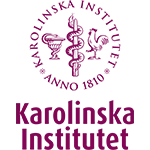Explore the credit course catalogue
74 Results

This workshop provides a hands-on learning experience with a focus on a wider variety of AI tools, their ethical implications and their practical applications. The aim is to facilitate the responsible and efficient use of AI-based tools in research and academia.
Content:
- Understand the importance of using AI in research and academia and assess the benefits and risks involved
- Craft effective prompts for your research tasks
- Develop strategies to integrate AI tools into your research workflow
- Stay informed about and adapt to new developments in the field of AI
At the end of the workshop, you will receive a list of generative AI prompts useful in research and academia. There will be practice sessions during the workshop for which you will need access to AI tools, particularly ChatGPT/GPT-4o. If you do not have an account with ChatGPT/GPT-4o, alternatives like Microsoft Copilot, Google Bard or Claude.ai could also be used.

In the workshop “Fit for AI - Prompting for advanced users” you can get to know and try out prompting tips and techniques. You will learn about prompting techniques such as Few Shot Prompting, Chain-of-Thought Prompting and others. You can try out these techniques directly on various tasks and your own examples.

This seminar focuses on the increasing importance of Artificial Intelligence (AI) in academic research and writing, providing practical insights into AI technologies; use in these areas.The workshop explores ChatGPT and prompt engineering, as well as other academic AI tools to aid research and writing, examining both benefits and challenges. Ethical aspects, such as copyright and authenticity of research results, are discussed, with the goal of equipping participants with practical knowledge and skills to effectively utilize AI in daily research through interactive elements like case studies and group discussions.

The course is practical and aims at teaching students how to:
- Use the programming environment R and RStudio, which includes installation, how to handle errors, problem solve and access helper documents.
- Use basic concepts of programming, such as data types, logical and arithmetic operators, if else conditions, loops and functions.
- Use common R packages to perform basic statistical analysis (e.g., t-test, chi2-test, correlation) and visual presentation (e.g., boxplot, histogram and heat-map) of data in R.
The course is structured with the intent to gradually make students more autonomous in writing code. Starting by introducing a concept through a lecture, then providing formative quizzes and tasks relateed to the concept. This all leads up to a project (exam) where the student gets to combine multiple concepts into a project with the intent of solving a certain problem or displaying specific statistical tests of visual components.

Do you need to turn data into a publication figure? We offer tools and confidence for the student to independently select a statistical method for research questions in their field. The course is practical and includes implementing a basic statistical analysis in R, the leading statistical programming language in bioinformatics and medical science. Furthermore, we give a brief introduction to visualization in R, with a focus on R/ggplot2. Students can bring data from their own research project, or work on data from the course.

The "Clinical Research in Child and Adolescent Psychiatry: Methods and Practice" course aims to cover a range of methodological factors in clinical trials on youths with psychiatric disorders, including psychiatric assessment and psychological as well as pharmacological treatment. The course will provide broad as well as in-depth knowledge about methodological and practical aspects of clinical psychiatric research focusing on children and adolescents. The course also addresses good clinical practice principles and Swedish and international rules and regulations relevant to clinical research involving young individuals.

This course will provide curious students with an overview of the field of nervous system injury and possibilities for repair. We will focus on the cellular pathobiology but have a translational outlook and integrate the clinical perspective. The student will after the course know the basic concepts and recognise relevant research questions in the field. Hence, the student have aquired up to date information and understanding of the problems and possibilities for repairing an injured central or peripheral nervous system.

This course has the main general purpose of connecting two topics, or disease types, which are generally known by the scientific community to be completely distant from each other, such as Infections of the Central Nervous System (Neuro-Infections) and neurodegenerative diseases/dementia.
Students should gain knowledge on the common neuroinflammatory processes and molecular mechanisms of neuronal damage that are common between neurodegenerative diseases and Central Nervous System infections. These learning outcomes reflect the purpose of the course, which is of shedding light into the interplay between dementia/neurodegenerative disease and infections and try to understand the molecular biology that connects these two types of brain disease.

This course provides a solid ground in neuroscience, including cellular neuroscience, sensory and motor functions, and higher brain functions. It is intended for those lacking a basic neuroscience education. It runs in parallel with the Neuroscince course of the Bachelors programme in biomedicine. The course does not give regular course credits for doctoral students, but can be used to cover the demand of a grounding course in human physiology/pathology.

The purpose of the course is to give doctoral students a broad knowledge of Alzheimer's disease, covering cellular
mechanisms as well as clinical features and diagnosis. Experts in the field are invited to give the lectures securing
communication of up-to-date knowledge about the disease. Students will also get the opportunity to obtain deeper
knowledge on specific sub-topics during the planned group assignments. The second part will provide pratical
knowledge about brain development, brain anatomy and connectivty and AD and dementia neuropathologies.

This course takes you on a journey into the exploration of how the brain shapes and enables our social and affective behaviors. We will examine key questions, such as how we learn from each other, when and in what ways social norms influence us, and how our communication and social decision-making unfold.

Topics covered include:
- Basics of monolayer glioblastoma cell culturing
- Generation and culturing of human glioblastoma organoids
- Immunochemistry, Western Blot, DNA/RNA isolation
- Flow cytometry analysis of cell death and cell viability assays
- Live-cell imaging and morphology analysis
- Data analysis including statistics using ImageJ, FlowJo, GraphPad PRISM
- Visualization of results using Microsoft Excel/Powerpoint or Adobe illustrator

Topics covered include:
- Hearing and speech perception and associated disorders (e.g., hearing loss, deafness, tinnitus)
- Vestibular function and associated disorders
- Objective electrophysiological measures: auditory and/or vestibular evoked responses (ECochG, BERA, ASSR, CERA, VEMP)
- Behavioural experiments (psychoacoustics)
- Principles of hearing rehabilitation with neural prostheses, i.e., cochlear implants
- Research methods in audiology/auditory neuroscience
- Application of methodology (in patients, if possible)
- How to design and conduct research projects

Topics covered include:
- Computational design strategies
- Differential equations
- Programming in Python
- Data analysis

Topics covered include:
- Experimental design strategies
- Fluorescent immuno-histochemistry
- Confocal Microscopy
- Intra-vital Microscopy (e.g. two-photon, three-photon, 2P-STED, ...)
- Data analysis
- Behaviour

Topics coverd include:
- Vascular Biology and organotypic properties
- How to investigate blood vessels in the CNS
- Isolation of blood vessels and endothelial cells from the mouse CNS
- Endothelial cell tube formation assay
- Co-culture of endothelial cells and pericytes in 3D
- In vitro blood brain barrier assay

Topics covered include:
- Tissue isolation and cryosectioning
- Immunofluorescent staining/Western blots
- Tissue isolation and cryosectioning
- Imaging (e.g. Confocal microscopy, Slide scanner etc.)
- (Semi-) automated image anaylsis (e.g. Fiji, machine learning based analysis)

Topics covered include:
- CRISPR/Cas9 mediated genome editing in mammalian cell lines
- CRISPRoff genome editing tools to modify activity of gene promoters
- Cloning of promoter regions and relevant proteins into reporter gene and mammalian expression vectors
- Reporter gene assays to measure activity of gene promoters or unknown DNA sequences using plate luminometer
- Chemical modification of genomic DNA for DNA methylation analysis
- Pyrosequencing for detection and quantification of DNA methylation
- Chromatin preparation and chromatin immunoprecipitation analysis
- Standard PCR and quantitative reverse transcription PCR analysis
- Transfection and expression of relevant proteins in mammalian cells
- Western blotting for protein analysis

Topics covered include:
- rAAV-guided engram labeling techniques (Cal-Light, SomCal-Light, FLARE)
- Tissue engineering (FluoClearBABB, ExM)
- Large-field superresolution microscopy
- AI-guided behavioral classification
- Multifactorial behavioral classification

Topics covered include:
- Coding: theory, practical training, coding styles, unit testing
- Collaborative software development workflows
- Data analytics workflows
- (Generalised) linear mixed effects models
- Bayesian statistics
- Data visualisation
- Workflow automation
- Meta-science

Topics covered include:
- Deep brain imaging using single- and two-photon imaging techniques
- Miniature microscope recordings in freely moving animals
- Combined all-optical imaging and optogenetic tools
- Large scale neural population analysis using data science and machine learning techniques
- Behavioural phenotyping using markerless pose estimation
- Scientific programming using Python

Topics covered include:
- Histological preparation of rodent sensory organs
- Immunohistochemistry on mole-rat and mouse neuronal tissues
- 3D histology using tissue clearing
- Fluorescence microscopy, Light sheet microscopy
- Behavioural assessment of magnetic orientation under controlled conditions

Topics covered include:
- Cellular resolution fluorescent in vivo imaging (mouse model)
- Histological analysis of post-encephalitic brain tissue changes
- Field electrophysiology (in vivo, in vitro)
- Patch-clamp cellular recordings (in vitro)
- Targeted light-based circuit interference, light-activated antiepileptic drugs

This module is dedicated to understanding and investigating how small molecular modulators can be used to specifically target prominent metabolic pathways using the mouse as an experimental animal model. Attendees will be introduced to murine animal handling, murine primary adipocyte isolation and in vivo, ex vivo and in vitro pharmacological experimentation with the model system. The practical work will be supported by institute seminars covering, among other, signal transduction metabolism and pharmacology.

Topics covered include:
- Assessment of memory and imagination in patients with neurodegenerative dementias and related to aphantasia
- Rating of patients’ memory reports
- Analysis of patient data
- Writing summary reports

The lab-based practical part of the course will cover methods used to tackle questions in the research area outlined above, such as cell culture, microscopy, tissue dissociation and processing of tissue samples, MACS and FACS-based cell analysis and separation, cell transfection, cell genome engineering, transgene expression, cellular
assays, protein and gene expression analyses etc. In addition to the practical part, students will attend lectures and seminars.

Topics covered include:
- animal models to study epileptogenesis
- *omics analyses of human epileptic specimen
- Screening analyses for classical auto-antibodies and new candidates inpatients suspicious for limbic encephalitis
- Analyzing the functional role of patient-derived auto-antibodies in epilepsy in vitro und in vivo
- Analyzing synchronous network activity in vitro (multi electrode array; MEA)
- CrispR-Cas systems to interfere with epileptogenesis
- Generation of animal models to study limbic encephalitis
- Neuropathology in experimental LE

Topics covered include:
- Basic protein-biochemical methods (protein-protein interactions, Western Blotting
- Processing of human samples for protein detection
- Basic cloning techniques and CRISPR
- Cell culture work with primary cells and cell lines

Topics covered include:
- Diversity of neuronal cell types and approaches to cell type classification
- Experimental design to dissect the functional contribution of diverse neuronal cell types to behaviour
- Stereotaxic surgeries and cell type-specific targeting with viral vectors in transgenic mice
- Deep-brain imaging at the single-cell level using miniature microscopes in freely-moving mice and 2-photon recordings in head-fixed animals
- All-optical interrogation of neural circuits with combined imaging and optogenetic approaches
- Introduction to analysis of deep-brain imaging data

Topics covered include:
- Hypothesis driven planning and design of experiments for research project
- Cloning, colony cracking and transfection
- Cell culture and life cell imaging
- Imaging and data analysis
- Application of techniques depend on individual working plan


